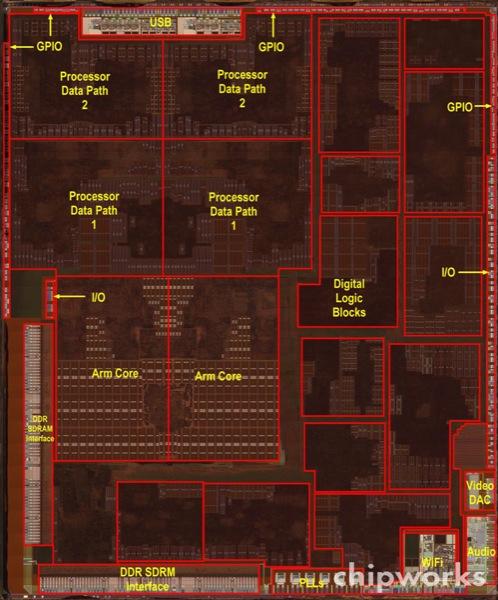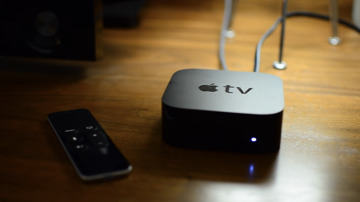Although Wednesday's Apple TV refresh played second fiddle to "the new iPad" announcement, the diminutive set-top media streamer packs an easily overlooked spec that gives some perspective as to how Apple plans to win the war for the living room.
On the revamped Apple TV webpage a tech spec shows that a never-before-seen custom A5 processor is the silicon powering the device, though not much is known about the chip as it isn't mentioned anywhere else.
What is interesting about this particular A5 is that, unlike versions found in the iPhone 4S and iPad 2, it is a single core unit which may mean that the company has redesigned the chip specifically for the Apple TV.
It is unclear whether Apple will choose to use the chip in future products rather than using either the current dual-core A5 or new A5X.
The single-core A5 listed among the new Apple TV's tech specs. | Source: Apple
The original dual-core 1GHz A5 was introduced in March 2011 with the second generation iPad, and eventually found itself in the iPhone 4S — albeit at a lower clock rate due to power constraints.
Designed by the Cupertino, Calif., company and manufactured by Samsung, the processor is a package-on-package (PoP) system-on-chip (SoC) which stacks a dual-core ARM Cortex-9 CPU, dual-core PowerVR GPU and memory along with other computing assets into a small package. In addition to the base operating features, the A5 in the iPhone 4S includes noise canceling technology that is used by Apple's Siri assistant.
One of the main draws of building custom SoCs is that they can be architected for particular functions like media streaming, thus reducing the cost of paying for extraneous components or package assets.
The ability to tool and manufacture custom silicon gives Apple a leg up on competing companies that use off-the-shelf components, and allows the iPad maker to be agile in a constantly changing market. Not beholden to the technology of OEMs like Intel, Apple can build products around its unique SoCs and bring devices to market that are application specific.
Apple continues its use of the A-series with the newly introduced A5X, which will make its way into the third generation iPad and adds a quad-core GPU to the existing dual-core CPU.
 Mikey Campbell
Mikey Campbell








-m.jpg)






 Amber Neely
Amber Neely
 Andrew Orr
Andrew Orr

 Sponsored Content
Sponsored Content

 William Gallagher
William Gallagher










47 Comments
I bet the real story is that they have enough bAd a5's beIng made that they can disable a core and still sell them
It's probably just a collection of chips with one core disabled. FAR cheaper than custom designing a new one.
Probably harvested chips with defects in one core, like AMDs tri-core CPUs a while ago. Either way, who cares, as long as it can push 1080p.
It's probably just a collection of chips with one core disabled. FAR cheaper than custom designing a new one.
Maybe. I'm sure we'll see soon enough when iFixit puts it under a scanning electron microscope. I would doubt that the defect rate of this chip is high enough that they are just using ones with defects for this product (there are 4+ million Rev 2 Apple TVs in the field). Most likely apple sells enough of these things now to justify doing a special run just for this product. The A4/A5 already had all the features the Apple TV needed. This A5 just needs to turn a few things off it didn't need.
Maybe. I'm sure we'll see soon enough when iFixit puts it under a scanning electron microscope. I would doubt that the defect rate of this chip is high enough that they are just using ones with defects for this product (there are 4+ million Rev 2 Apple TVs in the field). Most likely apple sells enough of these things now to justify doing a special run just for this product. The A4/A5 already had all the features the Apple TV needed. This A5 just needs to turn a few things off it didn't need.
How many millions of iOS devices did they say they sold in the keynote? Between the 4S and the iPad 2, I think they'd have quite a few die-harvested chips to work with.